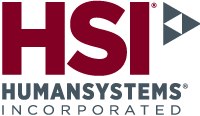I admit it… I’m a travel junkie. I love exploring new places, and I’m incredibly lucky that some of my work enables this addictive habit! If you’ve explored our website, you may have read about a project I’ve worked on called the Load Effects Assessment Program (or LEAP – I love it when a project has a catchy acronym!). For those of you who haven’t read our whole website (yet!), allow me to explain.
The LEAP is a series of physically demanding, instrumented obstacles and performance stations that were created based on the typical actions and movements of soldiers in combat. For example, we created tunnel obstacles to simulate soldiers crawling through culverts and confined spaces, as they are sometimes required to do on the battlefield. The LEAP was developed to answer questions about how different loads soldiers wear or carry affect their performance on the battlefield. At what level of burden does the load negatively impact a soldier’s performance? In addition to the weight, do the stiffness and bulk of the load play a part in performance decrement? If so, by how much? These are some of the questions that we help our clients answer. And how does this relate to my travel bug? These clients are located in some very cool places!
I believe there are many potential applications of a LEAP concept. Yes, this particular LEAP was developed with military experts for a specific combat application, but it does not have to be limited to just that! The concept of creating a load or product assessment system can be applied to many different domains. A company or organization that wants to know the effects of any equipment, clothing or device on the performance of its people could benefit from a LEAP. For example, would it not be in emergency services’ best interest to understand how a particular firefighting helmet impacts firefighters’ performance and safety prior to mass purchase? How could they gain that understanding? The answer: by building a customized LEAP! There are several steps involved in doing this (and these same steps were utilized to develop the original military LEAP):
- Collaborate with subject matter experts (SMEs) to understand the nature of the work performed
- Identify and select tasks that are critical to the occupation or activity
- Define how to objectively measure the tasks
- Create preliminary designs and models of the LEAP and provide these to SMEs for feedback
- Refine designs based on SME feedback; repeat
- Build, verify, validate
So now you have this great assessment system in place, but how do you use it? For the firefighter example, you would use the LEAP to compare the effect of a new helmet on a firefighter’s performance to a baseline (i.e. the firefighter’s performance while wearing the current helmet).
You must consider who you are going to put through the LEAP. It is important to perform the testing with a wide range of end users. Users with different physical characteristics, strength, and levels of experience should all be represented, as well as users from both genders.
What are you going to test? That would be determined by the creation of your LEAP and what measures were deemed crucial to performance. For past military LEAPs, measures have included jump height, time to complete obstacle segments, time to complete the whole course, shot accuracy, and time to move a load from one place to the next.
When is the best time to test? Best answer: as early as possible in the purchasing process. Or, if creating an item from a conceptual design right through to a final product, test early and often throughout the design cycle. You want to know what the effects of that new piece of kit are on a person’s performance well before investing large amounts of time and money in the design. Even building and testing simple or rough mock-ups will tell you a lot about the design’s strengths and weaknesses. If you’re going to discover any performance-related design failures, the mock-up stage is the place to do it.
And finally, where should the testing take place? Ideally, you want the test system (LEAP) to be able to travel (oh, there’s my favourite word again!) to where your people are. We find that, when performing testing and evaluation trials with large groups of people, it is much less disruptive to the personal lives of the participants if you can bring the test system to them. Also, providing transportation, accommodation, and meals to a large number of participants is costly, so that’s why the LEAP is transportable. The LEAP can be packed into two 20-foot shipping containers and sent anywhere in the world. Just don’t forget to write down that UPS tracking number.
If you take anything away from this blog, please let it be this: when purchasing or designing a new product or piece of equipment, TESTING IS CRUCIAL! Specifically, measurable performance-based testing that employs actual end users, carrying out tasks that are truly representative of the occupation, is the way to go.
By the way, if you want to check out a neat video about Canadian astronauts completing the LEAP (in the Great Space Race, October 2014), click here.
Alison Kelly




